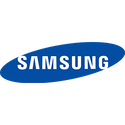Based on a report by Susquehanna, the lead time for what can be called ancillary semiconductors, i.e. the kind that are paired up with processor, SoCs and GPUs, now have a lead time of over six months. This is based on data from the distribution channel and as such, it's unlikely to affect large companies that have long-term contracts with their suppliers. However, smaller companies, or semiconductor manufacturers that solely rely on the distribution channel for sales of the parts, are not in a good place right now. Obviously this doesn't affect everything equally and many parts are also in stock with the big distributors, but sometimes at inflated prices compared to a couple of years ago.
Susquehanna is pointing towards several reasons for the increase in lead times, although the big ones include the Russia's war on Ukraine, an earthquake in Japan (on the 16th of March) as well as the more recent lockdowns in several cities in the PRC which are key to the production of everything from semiconductors to finished consumer goods. At the latter half of 2020, the lead time was less than 14 weeks, but has since then increased to almost 27 weeks and it looks like it's likely to continue to increase for the time being. The worst hit components are said to be analogue chips, so things like signal amplifiers, power control oscillators and the like, which had the lead times increased by 18 over the space of a month. The report says that Broadcom has increased its shipping times by as much as 30 weeks and its backlog of orders just keeps growing. This is quite surprising, as earlier reports mentioned that the WiFi makers were reasonably unaffected by the increase in lead times, but Broadcom does make a wealth of other products too, so this could be unrelated. On a more positive note, it seems like the lead time for passive components has improved by a couple of days, with an average lead time of 25 weeks.











































